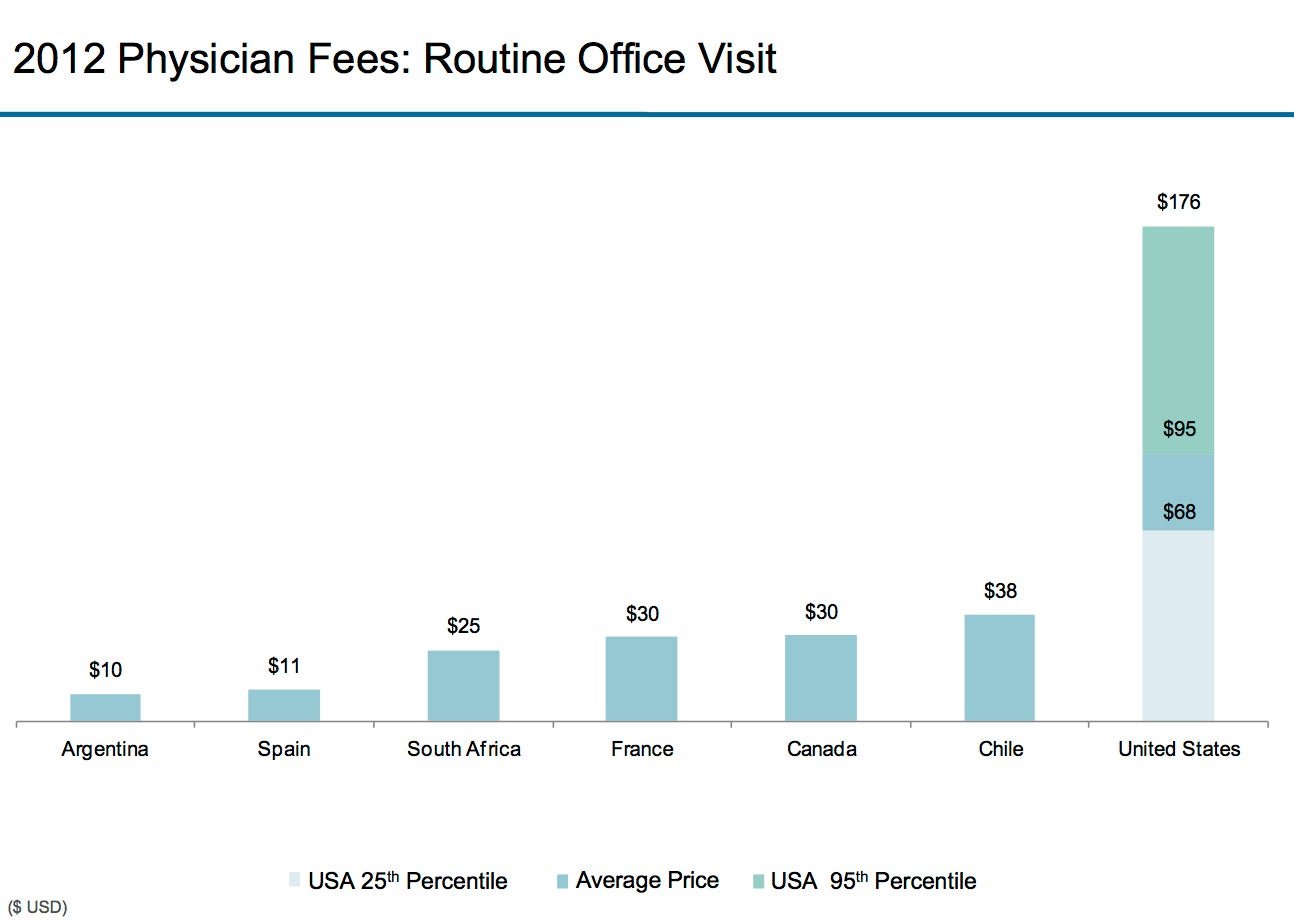Why is American health care so absurdly expensive?
The U.S. medical system is absurdly expensive. You knew that already. But you probably didn’t realize just how absurdly expensive it is compared to other countries.

The U.S. medical system is absurdly expensive. You knew that already. But you probably didn’t realize just how absurdly expensive it is compared to other countries.
These 21 graphs (one of them you’ll see above) from the International Federation of Health Plans, via Ezra Klein, start to paint the picture. The average routine office visit in the U.S. is three-times more expensive than in Canada. The average CT scan is five-times more expensive than in Canada. And as a share of GDP, our health care costs are an ignominious colossus towering over the rest of the world:
In the U.S. health care system, everything costs more. Being in a hospital cost more. Because our drugs cost more (prescription drug prices can be 10X the rate in the UK or Germany). And our doctors cost more (a US family physician makes 3X her German counterpart). Because their education costs more (the education for a German physician’s education is nearly free). And on it goes.
Why is American health care so expensive? Books could be written about this topic. And books have been written about this topic. In The Healing of America, T. D. Reid explored why American medicine falls behind other countries in quality while it races far ahead in cost of care.
Near the end of the book, Reid expands on two big reasons why U.S. health care is so expensive: (1) Unlike other countries, the U.S. government doesn’t manage prices; and (2) the complications created by our for-profit system adds tremendous costs.
First, it really starts with the prices. While some developed countries have one health care insurance plan for everybody — where the government either sets prices or oversees price negotiations — the U.S. is unique in our reliance on for-profit insurance companies to pay for both essential and elective care. Twenty cents from every $1 goes, not to health care, but to “marketing, underwriting, administration, and profit,” he says. In a system where government doesn’t negotiate prices down, prices will be higher. In a system where for-profit companies need profit margins and advertising, prices will be higher.
Second, the absurd complexity of U.S. health care creates its own costs. There is a separate health care system for seniors, veterans, military personnel, Native Americans, end-stage renal failure, under 16 in a poor family, over 16 in a poor family, and working for the federal government, Reid writes. That’s on top of hundreds of private plans:
All these systems require another inefficiency — the existence of compilers, middlemen who compile the bills doctors submit and shuttle them thru the payment system. The US Government Accountability Office concluded that if we could get administrative costs of our medical system down to the Canadian level, the money saved would be enough to pay for health care for all the Americans who are uninsured.
It’s not like all this money buys us nothing. Complexity creates jobs, for high- and low-skilled workers alike. American health care is the world’s envy in some categories, especially in cancer care, wait times, and access to new technologies for affluent and insured families. We have the highest share of adults (90 percent) who report being in good health. The OECD average is 69 percent. But in terms of coverage and cost, we rank embarrassingly low among developed countries. It would be nice to say this is a bug of the American medical system. But it’s a feature. It’s a choice we’ve made. In some countries, government sets a lower price and doesn’t charge patients for marketing and margins. To this model, we’ve essentially said: No, thanks.